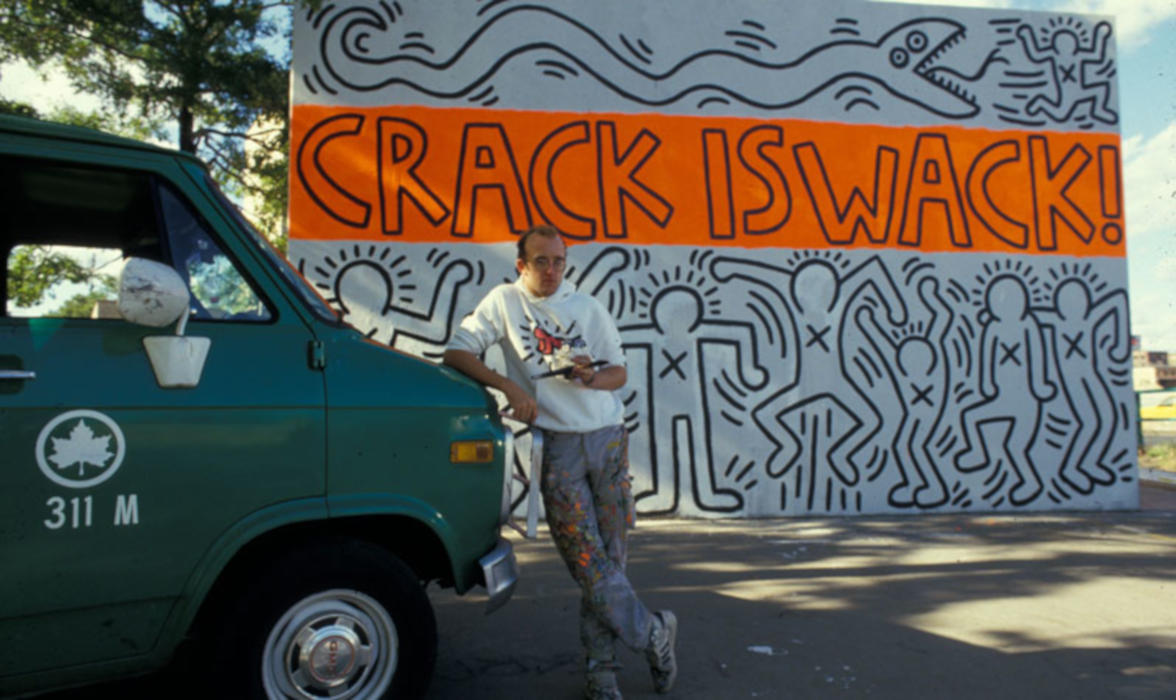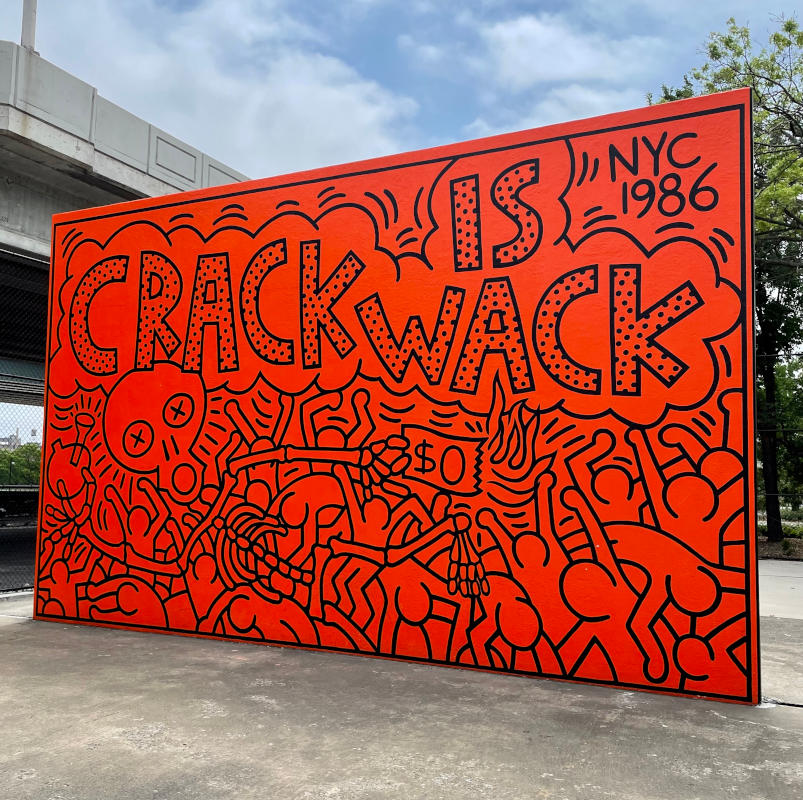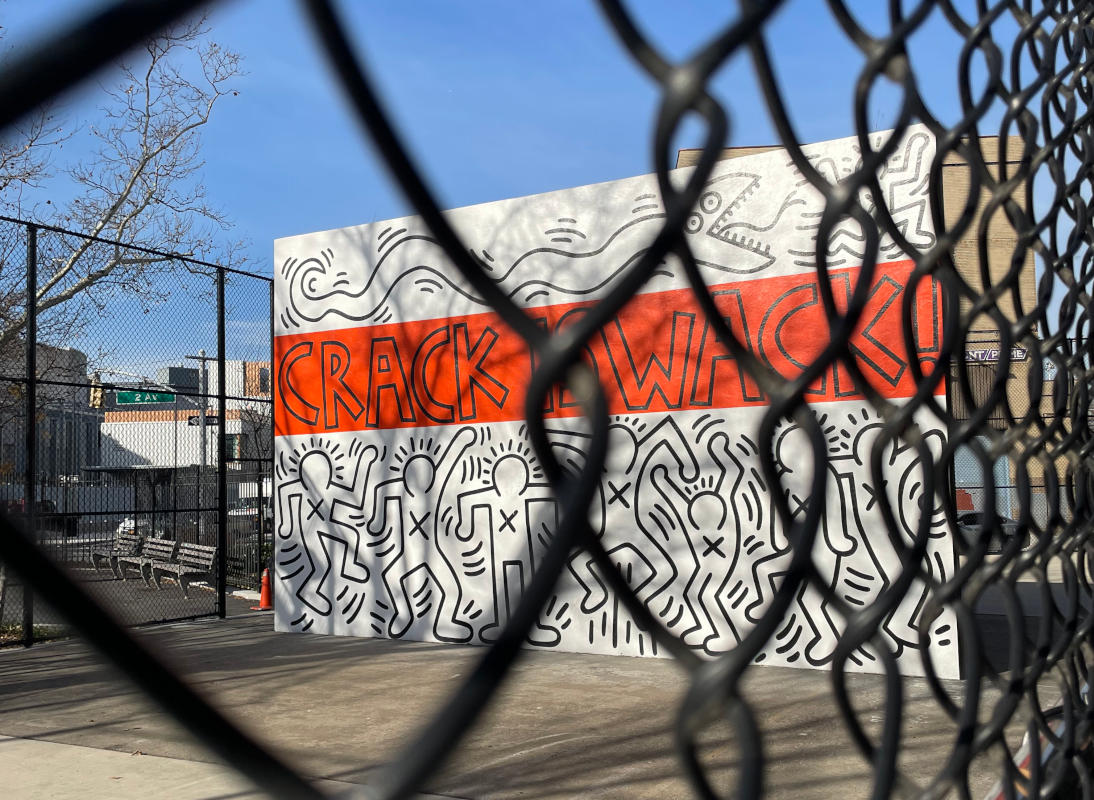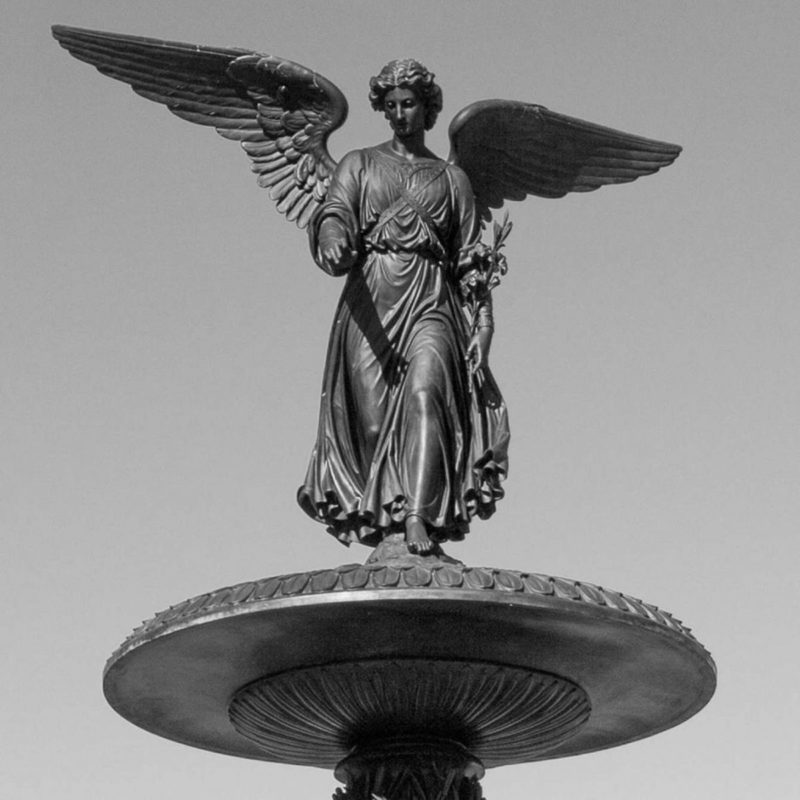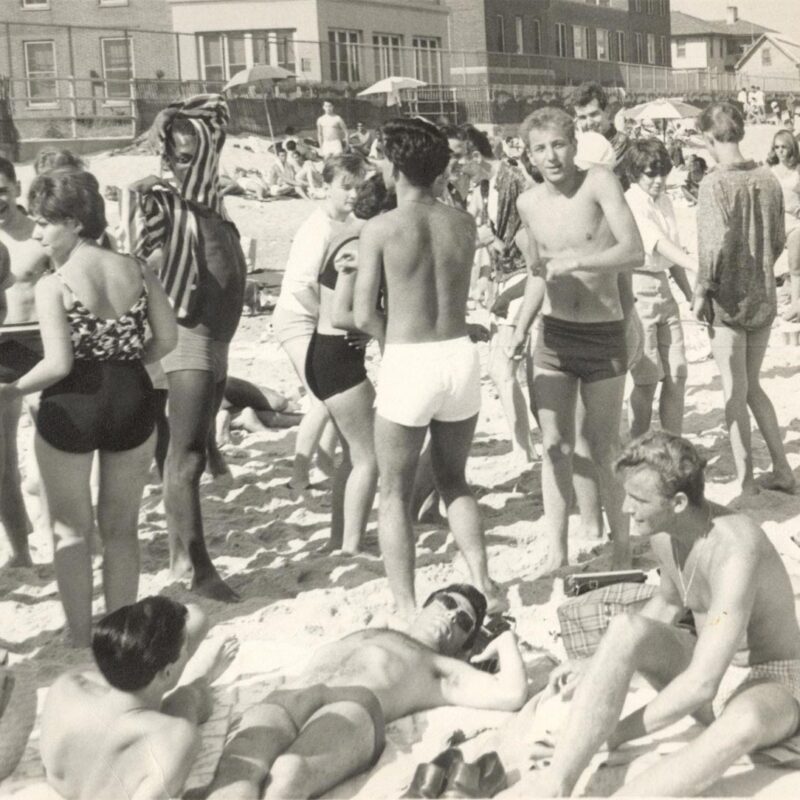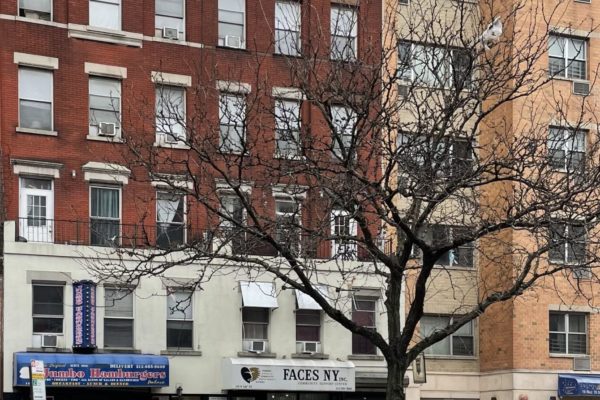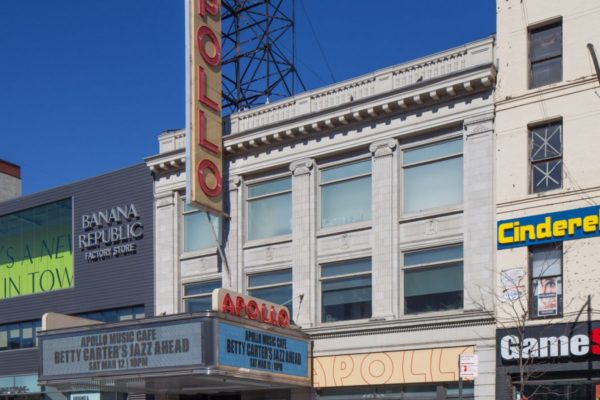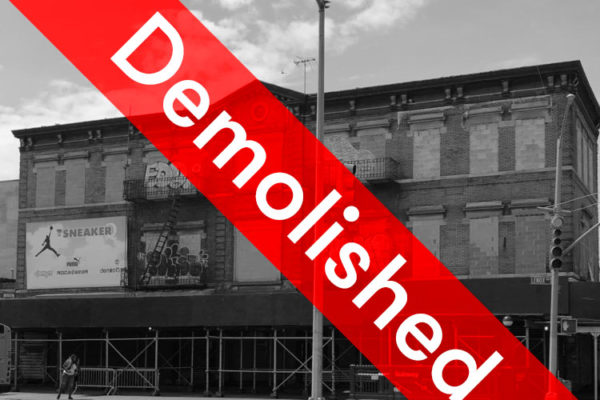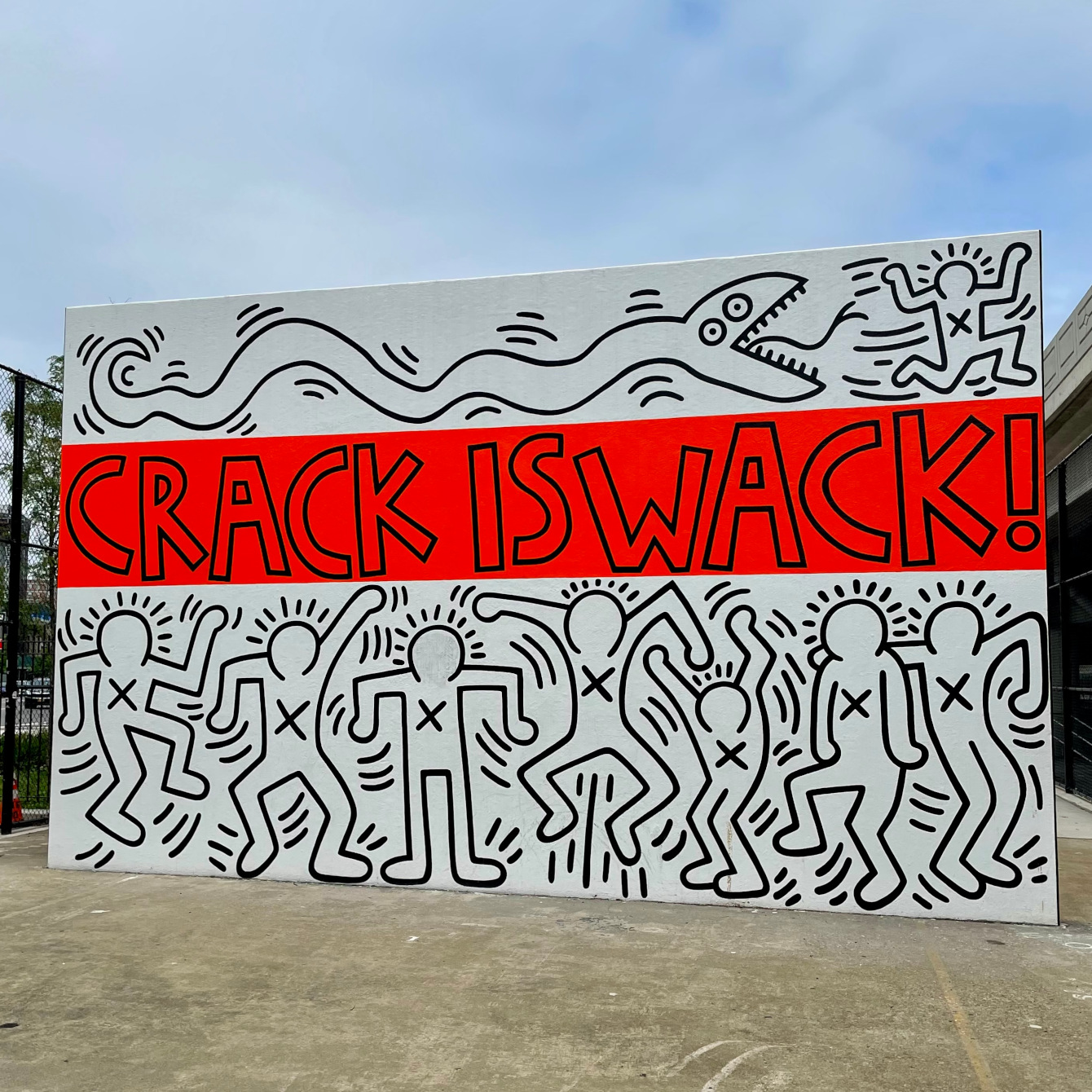
Keith Haring & “Crack is Wack”
overview
In 1986, Keith Haring painted his iconic Crack is Wack mural on a handball court wall visible from the Harlem River Drive (the mural there today is actually his second version at this location).
Created in response to the crack epidemic, which was then at its height in New York City, the mural was meant to caution young people from taking the dangerous drug.
On the Map
VIEW The Full MapHistory
The famous Crack is Wack mural, which is actually the second version at this location, was painted on both sides of a concrete handball court wall by the openly gay artist Keith Haring in 1986. It is located in what is now known as the Crack is Wack Playground, off the Harlem River Drive, at Second Avenue and East 128th Street. Haring’s legacy is closely tied to his public art, which first brought him attention in the early 1980s with his temporary chalk drawings on advertisement panels on the walls of the city’s subway platforms.
Crack is Wack, considered Haring’s most iconic piece, showcases his signature style for which he became known around the world in the 1980s. It is a rare surviving example in New York City of his street art in situ. Created at the height of the crack epidemic, the mural was dedicated to Haring’s studio assistant, Benny Soto, a Puerto Rican teenager from the South Bronx who was then addicted to crack, and it also served to caution other young people from taking the dangerous drug. As with his works created in the fight against AIDS, the piece is emblematic of how Haring used art to support causes he believed in and to express his frustration with government officials and their slow response in addressing these crises.
Haring created the first version of the mural on June 27, 1986, without permission from the site’s owner, the city’s Parks Department. He was promptly arrested for vandalism of city property by the police, but was later released after several media sources and the Parks Department supported his efforts to combat the crack epidemic through his art (Haring noted that Crack is Wack was often featured in news stories about the epidemic). While Haring was in police custody, his original mural was painted over in gray by someone at the Parks Department. However, the department’s commissioner later asked Haring to paint a new mural, which he did on October 3, 1986. This is the version — utilizing the same style and messaging as the original but in a different arrangement — that survives today.
During this period, Haring had an art studio on the top floor of 676 Broadway in Noho, where the Keith Haring Foundation is still located. According to the Foundation, Haring often worked spontaneously on non-traditional canvases, such as this handball court wall, and was not necessarily concerned about the long-term survival of his graffiti art on these less-than-ideal surfaces. The existence of Crack is Wack today is due in large part to the Parks Department and the Keith Haring Foundation, which have overseen several restorations of the mural, most recently in 2019.
In the summer of 1987, a year after Haring created Crack is Wack, he painted the Carmine Street Mural next to the public pool at the Carmine Street Recreation Center (now the Tony Dapolito Recreation Center) in Greenwich Village. This piece and his Once Upon a Time mural in the (now former) second-floor men’s bathroom at the LGBT Community Center also survive. Haring created these three murals in the years leading up to his untimely death, aged 31, from AIDS-related complications in 1990.
Entry by Amanda Davis, project manager (September 2021).
NOTE: Names above in bold indicate LGBT people.
Sources
“Crack is Wack, 1986,” Keith Haring Foundation, bit.ly/3rhF2PC.
“Crack is Wack Playground,” New York City Department of Parks & Recreation, on.nyc.gov/3BbHvzv.
“Iconic ‘Crack is Wack’ Mural by Keith Haring is Restored,” New York City Department of Parks & Recreation, October 24, 2019, on.nyc.gov/3wJ1tyc.
Do you have more information about this site?
This project is enriched by your participation! Do you have your own images of this site? Or a story to share? Would you like to suggest a different historic site?
